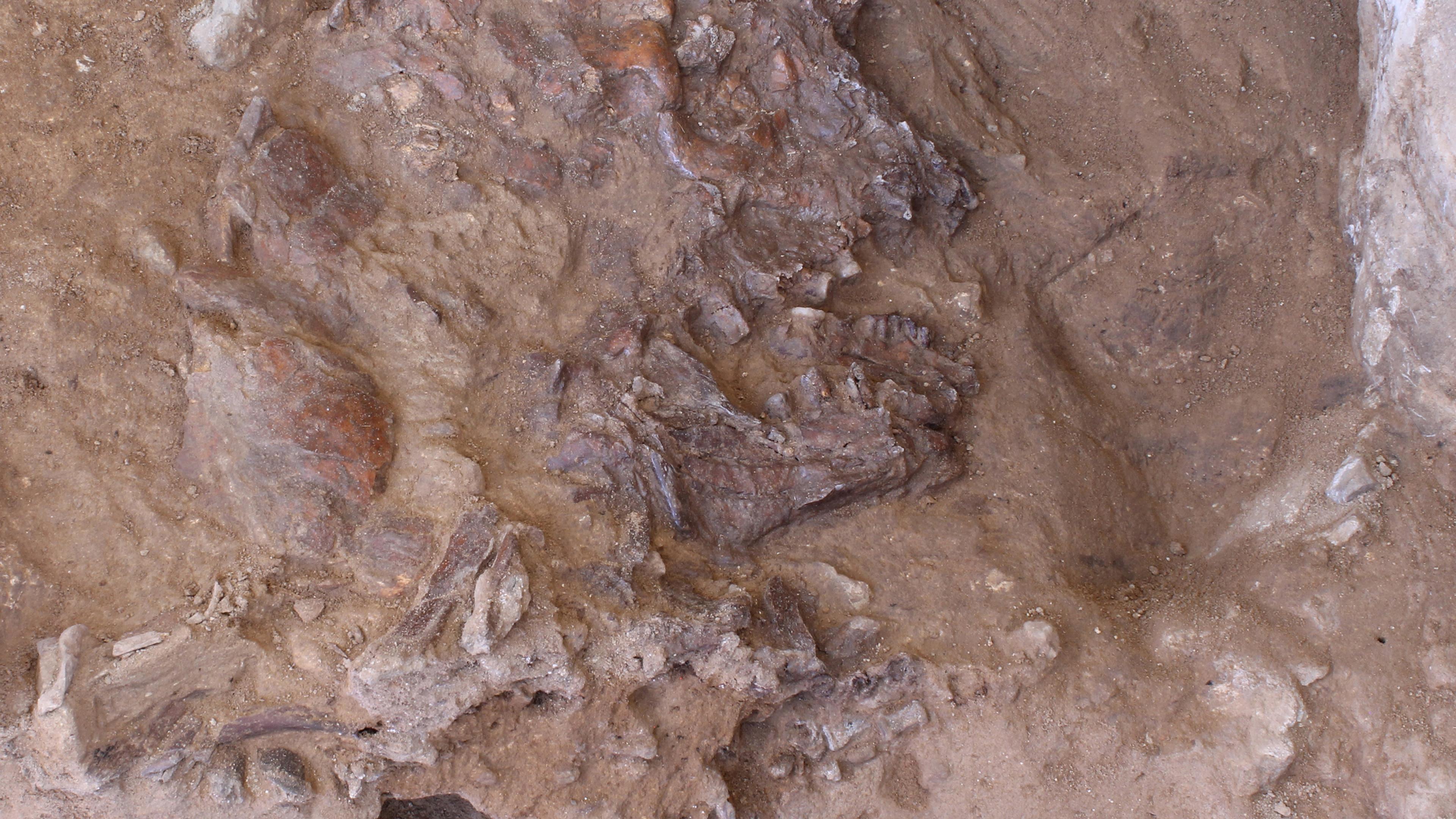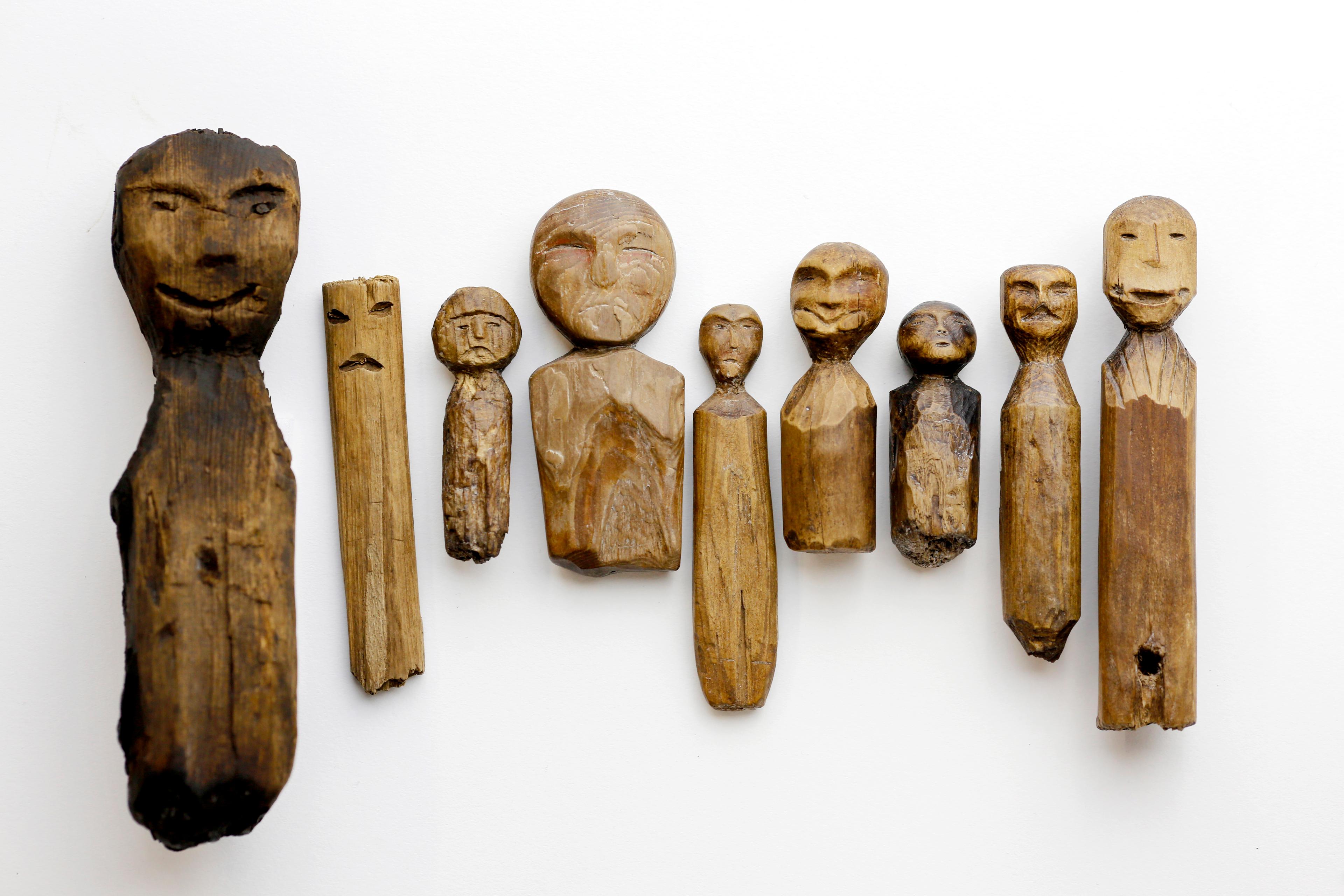The clumps of pollen found in the large cave in northern Iraq contained traces of hyacinth, bachelor’s button and hollyhock. These elements alone would not make your average pollen remarkable, but these clumps were found in the 1950s near 10 Neanderthal skeletal remains at Shanidar cave, in the Zagros Mountains.
The US archaeologist Ralph Solecki, along with pollen analysts and palynologists (who study fossilised plant pollen) called the site they excavated the ‘Flower Burial’. In a series of papers and books published in the 1970s detailing their findings, they suggested that Neanderthals had intentionally buried, and then placed flora around their dead in a show of funerary ritual.
All aspiring archaeologists read about the Flower Burial in school, says Graeme Barker, an archaeologist at the University of Cambridge. It was never just about the flowers, but about what they meant about Neanderthals’ inner emotional lives. The Flower Burial expanded ideas about what Neanderthals, an extinct species or subspecies of ancient humans, were cognitively capable of. If Neanderthals treated their dead in this way, they might have been feeling emotions such as compassion and grief, or considering what death means.
‘With the findings of flowers in association with Neanderthals, we are brought suddenly to the realisation that the universality of mankind and the love of beauty go beyond the boundary of our own species,’ wrote Solecki in his book Shanidar: The First Flower People (1971).
In 2011, the Kurdistan Regional Government invited Barker to re-excavate Shanidar. In 2014, Barker’s initial trip ended suddenly when the terrorist group ISIS got too close to the site, but he returned the following year, joined in 2016 by the Cambridge palaeoanthropologist Emma Pomeroy. They have found themselves facing questions raised by the Flower Burial more than 60 years ago.
‘In many ways, Shanidar is at the beginning of the debates about Neanderthals and how similar or different they were to Homo sapiens,’ Barker says. ‘At the heart of that is how did they deal with the dead, and what do they think about death?’
When Barker was invited to Shanidar, he says his goal wasn’t to find more remains or to disprove the Flower Burial. He targeted the spots where Solecki found Neanderthals, in order to date them using modern techniques but then he and his team happened upon more, previously undiscovered, Neanderthal remains by chance. ‘It was a complete surprise,’ Barker says.
In 2015 and 2016, they found leg bones from Solecki’s so-called ‘Shanidar 4’ Neanderthal. In 2017, they spotted the bones of a new individual near the Flower Burial that they then excavated in 2018 and 2019: a crushed skull of an adult, and parts of arms and upper torso. The burial dates to between 70,000 and 60,000 years ago, some 30,000 years older than the previous remains at the site. They called it Shanidar Z.
When Solecki found the remains of the Neanderthal individuals in the 1950s, their bodies contained provocative indications of something like emotional lives. One body appears to be a man who had been crippled when he was younger, but died as an adult. ‘That raises all sorts of questions about how he must have been looked after by the community to survive,’ Barker says, and whether Neanderthals cared for the sick or the disabled, and why.
The pollen is probably better explained by nesting solitary bees who burrow into the ground and walls of the caves
But there were doubts about the meaning of the pollen early on. Some of the workmen at the original excavation liked to put flowers in their belts that could have shed pollen, and wild flowers grew all around the cave, with pollen that could be brought in by rodents or wind. People visiting the cave might have tracked in pollen on the bottom of their shoes.
In a study from August 2023, Barker, Pomeroy and others proposed that the pollen is probably better explained by nesting solitary bees who burrow into the ground and walls of the caves, bringing pollen with them. ‘The pollen loads of individual bees can contain more than one species if they are foraging different species at once,’ the researchers wrote. This would help explain why the original analysis of the pollen clusters contained ‘two or three different species of agglutinated pollens’, which would be hard to explain if the pollen came only from flowers placed on top of bodies.
This means that the pollen that sparked curiosity about our distant relatives is probably not a relic of Neanderthal grieving – but that doesn’t mean that the cave can’t act as a window into the psychological past, and how Neanderthals treated their dead.
Even if the Flower Burial pollen was carried by bees, continuing to find so many bones altogether is likely not a coincidence, indicating it might have been a burial site, not just a place people died by happenstance. ‘The flowers captured people’s imagination,’ says Pomeroy. ‘But the fact that you’ve got this really tight cluster of individuals has received a lot less attention.’
One way of identifying whether a behaviour is something practical or more symbolic is to look for patterning, Pomeroy says. Shanidar 4 and Shanidar Z are positioned in the same way, and facing the same direction – towards the entrance of the cave.
‘If the direction you put a body in doesn’t mean anything, then we probably expect them to be fairly random,’ Pomeroy says. In the cave, there’s a large vertical pillar of rock that fell down from the ceiling that would have been there in the time when the Neanderthals were burying the bodies. Barker says it could have served as potential markers for the graves.
There are open questions about why Neanderthals went extinct, and how similar their behaviour was to humans. By looking at the sediments in the cave in more detail, Barker, Pomeroy and the team have also been able to find charred plants, showing that the Neanderthals were making pastes with wild grains and nuts, and cooking them. They’ve also found evidence for hearths where fires were created for short periods of time. ‘We’re getting these snapshots of the real everyday stuff,’ says Pomeroy.
What’s clear from their continued findings is evidence of deliberate, thoughtful behaviour
Studying soils and sediments from the site at a microscopic level, an approach known as micromorphology, the team has even found evidence of more pollen deeper in the ground – though it’s unclear what its source is. They’ve also shown that there’s sediment between the Neanderthal remains suggesting that some skeletons were buried above the others. This could mean that people returned back to the caves for burials, to that exact spot, and more than once.
The word ‘Neanderthal’ is still used widely as a slur, meaning less intelligent or unrefined. ‘It’s rarely used for somebody where you think he’s a fine poet,’ Barker says. While they’re trying to avoid undue storytelling, he thinks that what’s clear from their continued findings is evidence of deliberate, thoughtful behaviour, repeated over time.
‘It fits with an awful lot of other evidence that these species were much more complicated in many ways than we thought a few years ago,’ Barker says.
Neanderthals are not our direct ancestors, though all humans have some Neanderthal DNA. Ancient humans and Neanderthals lived alongside each other. That Neanderthals cared about the placement of their dead in some ways could help to reveal the path by which ancient humans too came to care about and bury their dead.
‘How did we end up being this kind of animal that uses symbolism and behaves in these complex ways and has these huge brains and, and has been able to sort of create this highly complex world?’ Pomeroy says. ‘That’s why understanding other related species is so important. We can’t answer that question unless we look back into our evolutionary past.’
This Idea was made possible through the support of a grant to Aeon+Psyche from the John Templeton Foundation. The opinions expressed in this publication are those of the author and do not necessarily reflect the views of the Foundation. Funders to Aeon+Psyche are not involved in editorial decision-making.








